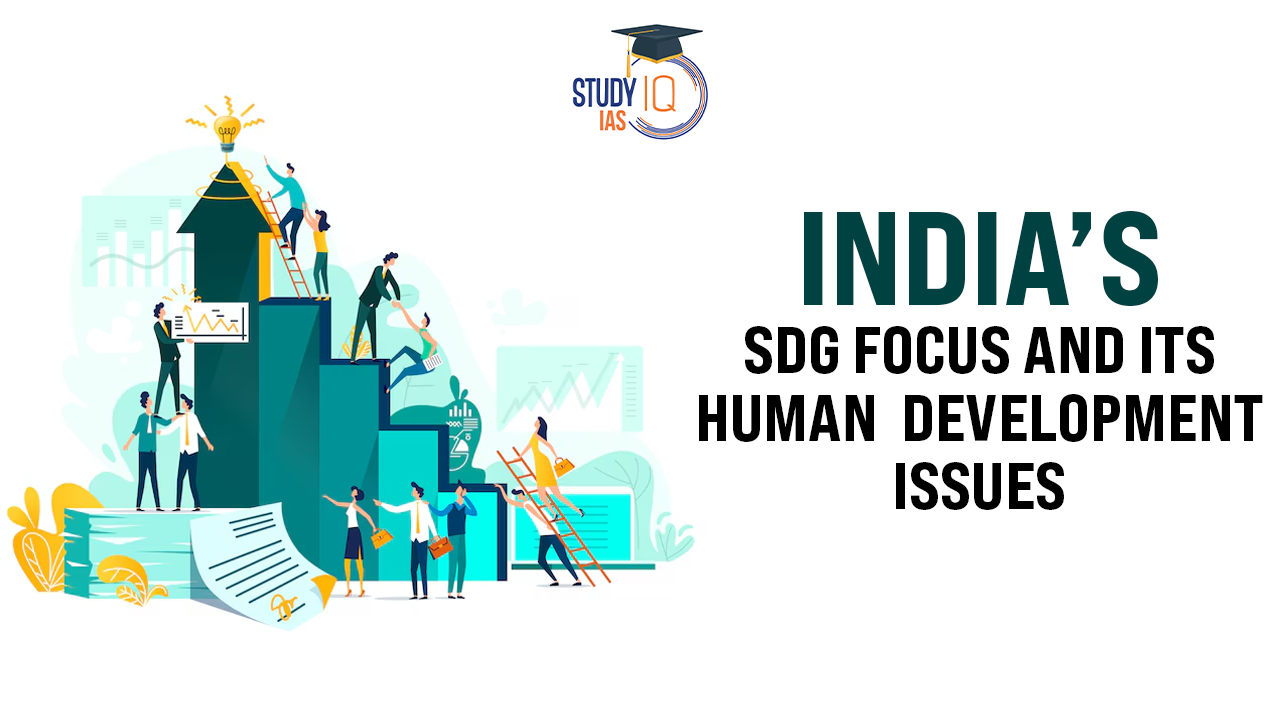Table of Contents
Highlight of the Human Development Report 2024
- India’s rank is 134 out of 193 countries
- The report categorised India under the medium human development bracket with an HDI value of 0.644.
- India’s HDI value stagnated at 638 in 2019-2020, fell to 0.633 in 2021, but improved to 0.644 in 2022.
- This reflects a 4% increase from an HDI of 0.434 in 1990.
- Regional Comparison:
- Malaysia (63)
- Thailand (66)
- China (75)
- Sri Lanka (78)
- Indonesia (112)
- Bhutan (125)
- Bangladesh (129)
Relation between HDI and SDG
- The HDI has 3 key dimensions—life expectancy (long and healthy life), education (expected years of schooling and mean years of schooling), and income per capita (standard of living).
- These dimensions are closely linked to SDG-3 (good health), SDG-4 (quality education), SDG-5 (gender equality), SDG-8 (decent work), and SDG-10 (reduced inequality).
| Gender Development Index (GDI) |
| The GDI measures gender disparities in human development by comparing HDI values for women and men. |
Gender Gaps in Development
- Among 42 ‘medium human development countries’, India is one of seven with significant gender inequality in HDI, with a gap exceeding 10% between men and women.
- Other countries with similar gaps include Bangladesh, Nepal, Uganda, and Morocco.
|
Fact |
|
Income Inequality
- Rising Income Inequality: Income inequality is increasing in India, where the richest 1% hold 21.7% of the total income.
- Comparison with Neighbours: In Bangladesh, the richest 1% hold 11.6% of income, in China 15.7%, in Bhutan 18.1%, and in Nepal 9.7%.
- Global Comparison: India’s income inequality is higher than the world average (17.5%) and the South Asia average (19.6%).
- It is also higher than other regional groups like East Asia and the Pacific (16.5%) and Europe and Central Asia (15.7%).
Policy Recommendations
- India needs to focus on addressing gender disparities and rising income inequality to make meaningful progress toward the Sustainable Development Goals (SDGs).
- These issues remain significant barriers to achieving human development and sustainable development in the country.


 Bihar Assembly Election 2025 Dates, Poli...
Bihar Assembly Election 2025 Dates, Poli...
 Bharat Bandh 9 July 2025: Over 25 Crore ...
Bharat Bandh 9 July 2025: Over 25 Crore ...
 Sukhoi Su-57: Will India Choose Russia�...
Sukhoi Su-57: Will India Choose Russia�...





















